- 20 Most Unethical Experiments in Psychology
Humanity often pays a high price for progress and understanding — at least, that seems to be the case in many famous psychological experiments. Human experimentation is a very interesting topic in the world of human psychology. While some famous experiments in psychology have left test subjects temporarily distressed, others have left their participants with life-long psychological issues . In either case, it’s easy to ask the question: “What’s ethical when it comes to science?” Then there are the experiments that involve children, animals, and test subjects who are unaware they’re being experimented on. How far is too far, if the result means a better understanding of the human mind and behavior ? We think we’ve found 20 answers to that question with our list of the most unethical experiments in psychology .

Emma Eckstein

Electroshock Therapy on Children

Operation Midnight Climax

The Monster Study
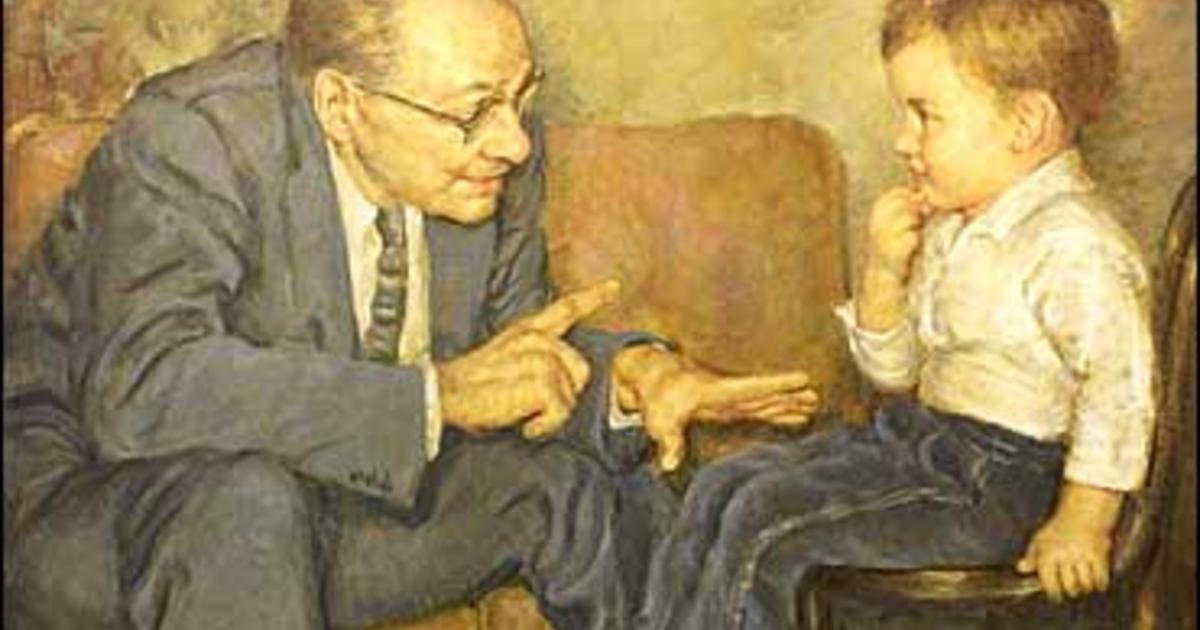
Project MKUltra
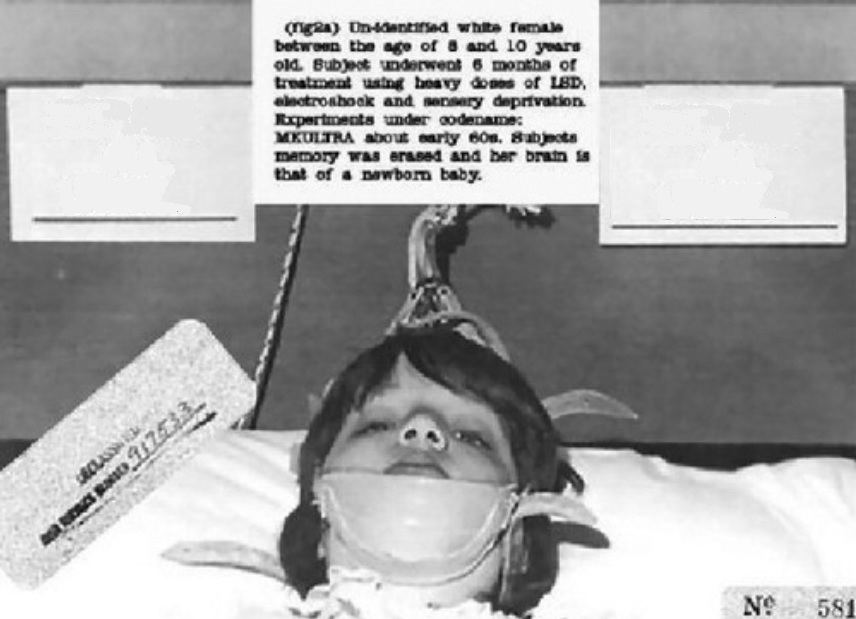
The Aversion Project

Unnecessary Sexual Reassignment

Stanford Prison Experiment
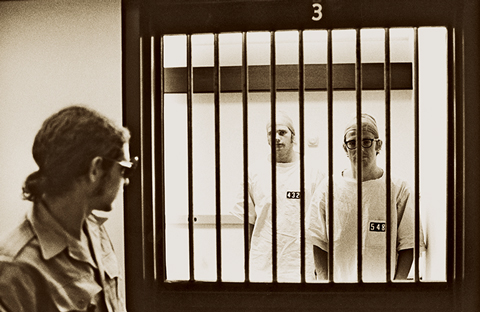
Milgram Experiment

The Monkey Drug Trials

Featured Programs
Facial expressions experiment.

Little Albert

Bobo Doll Experiment

The Pit of Despair

The Bystander Effect
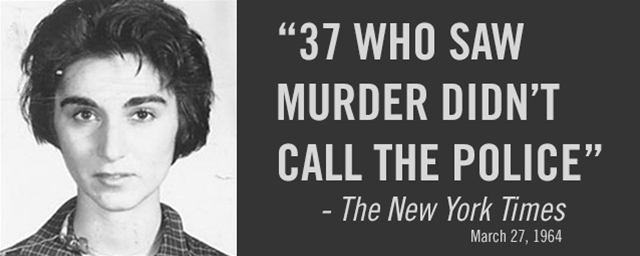
Learned Helplessness Experiment

Racism Among Elementary School Students

UCLA Schizophrenia Experiments

The Good Samaritan Experiment

Robbers Cave Experiment

Related Resources:
- What Careers are in Experimental Psychology?
- What is Experimental Psychology?
- The 25 Most Influential Psychological Experiments in History
- 5 Best Online Ph.D. Marriage and Family Counseling Programs
- Top 5 Online Doctorate in Educational Psychology
- 5 Best Online Ph.D. in Industrial and Organizational Psychology Programs
- Top 10 Online Master’s in Forensic Psychology
- 10 Most Affordable Counseling Psychology Online Programs
- 10 Most Affordable Online Industrial Organizational Psychology Programs
- 10 Most Affordable Online Developmental Psychology Online Programs
- 15 Most Affordable Online Sport Psychology Programs
- 10 Most Affordable School Psychology Online Degree Programs
- Top 50 Online Psychology Master’s Degree Programs
- Top 25 Online Master’s in Educational Psychology
- Top 25 Online Master’s in Industrial/Organizational Psychology
- Top 10 Most Affordable Online Master’s in Clinical Psychology Degree Programs
- Top 6 Most Affordable Online PhD/PsyD Programs in Clinical Psychology
- 50 Great Small Colleges for a Bachelor’s in Psychology
- 50 Most Innovative University Psychology Departments
- The 30 Most Influential Cognitive Psychologists Alive Today
- Top 30 Affordable Online Psychology Degree Programs
- 30 Most Influential Neuroscientists
- Top 40 Websites for Psychology Students and Professionals
- Top 30 Psychology Blogs
- 25 Celebrities With Animal Phobias
- Your Phobias Illustrated (Infographic)
- 15 Inspiring TED Talks on Overcoming Challenges
- 10 Fascinating Facts About the Psychology of Color
- 15 Scariest Mental Disorders of All Time
- 15 Things to Know About Mental Disorders in Animals
- 13 Most Deranged Serial Killers of All Time

Site Information
- About Online Psychology Degree Guide
- Bipolar Disorder
- Therapy Center
- When To See a Therapist
- Types of Therapy
- Best Online Therapy
- Best Couples Therapy
- Managing Stress
- Sleep and Dreaming
- Understanding Emotions
- Self-Improvement
- Healthy Relationships
- Student Resources
- Personality Types
- Guided Meditations
- Verywell Mind Insights
- 2024 Verywell Mind 25
- Mental Health in the Classroom
- Editorial Process
- Meet Our Review Board
- Crisis Support
Controversial and Unethical Psychology Experiments
Kendra Cherry, MS, is a psychosocial rehabilitation specialist, psychology educator, and author of the "Everything Psychology Book."
:max_bytes(150000):strip_icc():format(webp)/IMG_9791-89504ab694d54b66bbd72cb84ffb860e.jpg)
Shereen Lehman, MS, is a healthcare journalist and fact checker. She has co-authored two books for the popular Dummies Series (as Shereen Jegtvig).
:max_bytes(150000):strip_icc():format(webp)/Shereen-Lehman-MS-1000-b8eb65ee2fd1437094f29996bd4f8baa.jpg)
There have been a number of famous psychology experiments that are considered controversial, inhumane, unethical, and even downright cruel—here are five examples. Thanks to ethical codes and institutional review boards, most of these experiments could never be performed today.
At a Glance
Some of the most controversial and unethical experiments in psychology include Harlow's monkey experiments, Milgram's obedience experiments, Zimbardo's prison experiment, Watson's Little Albert experiment, and Seligman's learned helplessness experiment.
These and other controversial experiments led to the formation of rules and guidelines for performing ethical and humane research studies.
Harlow's Pit of Despair
Psychologist Harry Harlow performed a series of experiments in the 1960s designed to explore the powerful effects that love and attachment have on normal development. In these experiments, Harlow isolated young rhesus monkeys, depriving them of their mothers and keeping them from interacting with other monkeys.
The experiments were often shockingly cruel, and the results were just as devastating.
The Experiment
The infant monkeys in some experiments were separated from their real mothers and then raised by "wire" mothers. One of the surrogate mothers was made purely of wire.
While it provided food, it offered no softness or comfort. The other surrogate mother was made of wire and cloth, offering some degree of comfort to the infant monkeys.
Harlow found that while the monkeys would go to the wire mother for nourishment, they preferred the soft, cloth mother for comfort.
Some of Harlow's experiments involved isolating the young monkey in what he termed a "pit of despair." This was essentially an isolation chamber. Young monkeys were placed in the isolation chambers for as long as 10 weeks.
Other monkeys were isolated for as long as a year. Within just a few days, the infant monkeys would begin huddling in the corner of the chamber, remaining motionless.
The Results
Harlow's distressing research resulted in monkeys with severe emotional and social disturbances. They lacked social skills and were unable to play with other monkeys.
They were also incapable of normal sexual behavior, so Harlow devised yet another horrifying device, which he referred to as a "rape rack." The isolated monkeys were tied down in a mating position to be bred.
Not surprisingly, the isolated monkeys also ended up being incapable of taking care of their offspring, neglecting and abusing their young.
Harlow's experiments were finally halted in 1985 when the American Psychological Association passed rules regarding treating people and animals in research.
Milgram's Shocking Obedience Experiments
Isabelle Adam/Flickr/CC BY-NC-ND 2.0
If someone told you to deliver a painful, possibly fatal shock to another human being, would you do it? The vast majority of us would say that we absolutely would never do such a thing, but one controversial psychology experiment challenged this basic assumption.
Social psychologist Stanley Milgram conducted a series of experiments to explore the nature of obedience . Milgram's premise was that people would often go to great, sometimes dangerous, or even immoral, lengths to obey an authority figure.
The Experiments
In Milgram's experiment, subjects were ordered to deliver increasingly strong electrical shocks to another person. While the person in question was simply an actor who was pretending, the subjects themselves fully believed that the other person was actually being shocked.
The voltage levels started out at 30 volts and increased in 15-volt increments up to a maximum of 450 volts. The switches were also labeled with phrases including "slight shock," "medium shock," and "danger: severe shock." The maximum shock level was simply labeled with an ominous "XXX."
The results of the experiment were nothing short of astonishing. Many participants were willing to deliver the maximum level of shock, even when the person pretending to be shocked was begging to be released or complaining of a heart condition.
Milgram's experiment revealed stunning information about the lengths that people are willing to go in order to obey, but it also caused considerable distress for the participants involved.
Zimbardo's Simulated Prison Experiment
Darrin Klimek / Getty Images
Psychologist Philip Zimbardo went to high school with Stanley Milgram and had an interest in how situational variables contribute to social behavior.
In his famous and controversial experiment, he set up a mock prison in the basement of the psychology department at Stanford University. Participants were then randomly assigned to be either prisoners or guards. Zimbardo himself served as the prison warden.
The researchers attempted to make a realistic situation, even "arresting" the prisoners and bringing them into the mock prison. Prisoners were placed in uniforms, while the guards were told that they needed to maintain control of the prison without resorting to force or violence.
When the prisoners began to ignore orders, the guards began to utilize tactics that included humiliation and solitary confinement to punish and control the prisoners.
While the experiment was originally scheduled to last two full weeks it had to be halted after just six days. Why? Because the prison guards had started abusing their authority and were treating the prisoners cruelly. The prisoners, on the other hand, started to display signs of anxiety and emotional distress.
It wasn't until a graduate student (and Zimbardo's future wife) Christina Maslach visited the mock prison that it became clear that the situation was out of control and had gone too far. Maslach was appalled at what was going on and voiced her distress. Zimbardo then decided to call off the experiment.
Zimbardo later suggested that "although we ended the study a week earlier than planned, we did not end it soon enough."
Watson and Rayner's Little Albert Experiment
If you have ever taken an Introduction to Psychology class, then you are probably at least a little familiar with Little Albert.
Behaviorist John Watson and his assistant Rosalie Rayner conditioned a boy to fear a white rat, and this fear even generalized to other white objects including stuffed toys and Watson's own beard.
Obviously, this type of experiment is considered very controversial today. Frightening an infant and purposely conditioning the child to be afraid is clearly unethical.
As the story goes, the boy and his mother moved away before Watson and Rayner could decondition the child, so many people have wondered if there might be a man out there with a mysterious phobia of furry white objects.
Controversy
Some researchers have suggested that the boy at the center of the study was actually a cognitively impaired boy who ended up dying of hydrocephalus when he was just six years old. If this is true, it makes Watson's study even more disturbing and controversial.
However, more recent evidence suggests that the real Little Albert was actually a boy named William Albert Barger.
Seligman's Look Into Learned Helplessness
During the late 1960s, psychologists Martin Seligman and Steven F. Maier conducted experiments that involved conditioning dogs to expect an electrical shock after hearing a tone. Seligman and Maier observed some unexpected results.
When initially placed in a shuttle box in which one side was electrified, the dogs would quickly jump over a low barrier to escape the shocks. Next, the dogs were strapped into a harness where the shocks were unavoidable.
After being conditioned to expect a shock that they could not escape, the dogs were once again placed in the shuttlebox. Instead of jumping over the low barrier to escape, the dogs made no efforts to escape the box.
Instead, they simply lay down, whined and whimpered. Since they had previously learned that no escape was possible, they made no effort to change their circumstances. The researchers called this behavior learned helplessness .
Seligman's work is considered controversial because of the mistreating the animals involved in the study.
Impact of Unethical Experiments in Psychology
Many of the psychology experiments performed in the past simply would not be possible today, thanks to ethical guidelines that direct how studies are performed and how participants are treated. While these controversial experiments are often disturbing, we can still learn some important things about human and animal behavior from their results.
Perhaps most importantly, some of these controversial experiments led directly to the formation of rules and guidelines for performing psychology studies.
Blum, Deborah. Love at Goon Park: Harry Harlow and the science of affection . New York: Basic Books; 2011.
Sperry L. Mental Health and Mental Disorders: an Encyclopedia of Conditions, Treatments, and Well-Being . Santa Barbara, CA: Greenwood, an imprint of ABC-CLIO, LLC; 2016.
Marcus S. Obedience to Authority An Experimental View. By Stanley Milgram. illustrated . New York: Harper &. The New York Times.
Le Texier T. Debunking the Stanford Prison Experiment . Am Psychol . 2019;74(7):823‐839. doi:10.1037/amp0000401
Fridlund AJ, Beck HP, Goldie WD, Irons G. Little Albert: A neurologically impaired child . Hist Psychol. 2012;15(4):302-27. doi:10.1037/a0026720
Powell RA, Digdon N, Harris B, Smithson C. Correcting the record on Watson, Rayner, and Little Albert: Albert Barger as "psychology's lost boy" . Am Psychol . 2014;69(6):600‐611. doi:10.1037/a0036854
Seligman ME. Learned helplessness . Annu Rev Med . 1972;23:407‐412. doi:10.1146/annurev.me.23.020172.002203
By Kendra Cherry, MSEd Kendra Cherry, MS, is a psychosocial rehabilitation specialist, psychology educator, and author of the "Everything Psychology Book."

What Are The Top 10 Unethical Psychology Experiments?
- By Cliff Stamp, BS Psychology, MS Rehabilitation Counseling
- Published September 9, 2019
- Last Updated November 13, 2023
- Read Time 8 mins

Posted September 2019 by Clifton Stamp, B.S. Psychology; M.A. Rehabilitation Counseling, M.A. English; 10 updates since. Reading time: 8 min. Reading level: Grade 9+. Questions on unethical psychology experiments? Email Toni at: [email protected] .
Like all sciences, psychology relies on experimentation to validate its hypotheses. This puts researchers in a bit of a bind, in that experimentation requires manipulation of one set of variables. Manipulating human beings can be unethical and has the potential to lead to outright harm. Nowadays experiments that involve human beings must meet a high standard for safety and security for all research participants. Although ethical and safety standards in the 21st century keep people safe from any potential ill effects of experiments and studies, conditions just a few decades ago were far from ideal and were in many cases out and out harmful.
The Top 10 Unethical Psychology Experiments
10. The Stanford Prison Experiment (1971). This example of unethical research studies occurred in August of 1971, Dr. Philip Zimbardo of Stanford University began a Navy-funded experiment examining the effects of power dynamics between prison officers and prisoners. It only took six days before the experiment collapsed. Participants so completely absorbed their roles that the “officers” began psychologically torturing the prisoners and the prisoners became aggressive toward the officers. The prisoners, in turn, fought the guards and refused to comply with requests. By the second day, prisoners refused to obey guards and the guards started threatening prisoners with violence, far over their instructions. By the 6 th day, guards were harassing the prisoners physically and mentally and some guards had harmed prisoners. Zimbardo stopped the experiment at that point.
9. The Monster Study (1939). The Monster Study is a prime example of an unethical psychology experiment on humans that changed the world. Wendell Johnson, a psychologist at the University of Iowa, conducted an experiment about stuttering on 22 orphans. His graduate student, Mary Tudor, experimented while Johnson supervised her work. She divided a group of 22 children into two groups. Each group was a mixture of children with and without speech problems. One group received encouragement and positive feedback, but the other was ridiculed for any speech problems, including non-existent problems. Children who received ridicule naturally made no progress, and some of the orphans with no speech problems developed those very problems.
The study continued for six months and caused lasting, chronic psychological issues for some of the children. The study caused so much harm that some of the former subjects secured a monetary award from the University of Iowa in 2007 due to the harm they’d suffered.
8. The Milgram Conformity Experiment (1961 ). After the horrors of the Second World War, psychological researchers like Stanley Milgram wondered what made average citizens act like those in Germany who had committed atrocities. Milgram wanted to determine how far people would go carrying out actions that might be detrimental to others if they were ordered or encouraged to do so by an authority figure. The Milgram experiment showed the tension between that obedience to the orders of the authority figure and personal conscience.
In each experiment, Milgram designated three people as either a teacher, learner or experimenter. The “learner” was an actor planted by Milgram and stayed in a room separate from the experimenter and teacher. The teacher attempted to teach the learner how to perform small sets of word associations. When the learner got a pair wrong, the teacher delivered an electric shock to the learner. In reality, there was no shock given. The learner pretended to be in increasingly greater amounts of distress. When some teachers expressed hesitation about increasing the level of shocks, the experimenter encouraged them to do so.
Many of the subjects (the teachers) experienced severe and lasting psychological distress. The Milgram Conformity Experiment has become the byword for well-intentioned psychological experiments gone wrong.
8. David Reimer (1967–1977) . When David Reimer was eighth months old, his penis was seriously damaged during a failed circumcision. His parents contacted John Money, a professor of psychology and pediatrics at Johns Hopkins, who was a researcher in the development of gender. As David had an identical twin brother, Money viewed the situation as a rare opportunity to conduct his own experiment into the nature of gender, by advising Reimer’s parents to have the David sexually reassigned as a female. Money’s theory was that gender was a completely sociological construct and primarily influenced by nurture, as opposed to nature. Money was catastrophically wrong.
Reimer never identified as female and developed strong psychological attachment to being a male. At age 14, Reimer’s parents told him the truth about his condition and he elected to switch to a male identity. Although he later had surgery to correct the initial sex re-assignment, he suffered from profound depression related to his sex and gender issues and committed suicide in 2004. Money’s desire to test his controversial psychology experiment on humans without their consent cost someone his life.
7. Landis’ Facial Expressions Experiment (1924). In 1924, at the University of Minnesota, Carney Landis created an experiment on humans to investigate the similarity of different people’s’ facial expressions. He wanted to determine if people displayed similar or different facial expressions while experiencing common emotions.
Carney chose students as participants, who were exposed to different situations to prompt emotional reactions. However, to elicit revulsion, he ordered the participants to behead a live rat. One-third of participants refused to do it, while another two-thirds complied, with a great deal of trauma done to them–and the rats. This unethical experiment is one of many reasons review boards were created and have made drastic changes in policy over experiments done on humans.
6. The Aversion Project (1970s and 80s). During the apartheid years in South Africa, doctors in the South African military tried to “cure” homosexuality in conscripts by forcing them to undergo electroshock therapy and chemical castration. The military also forced gay conscripts to undergo sex-change operations. This happened as one segment of a secret military program headed by Dr. Aubrey Levin that sought to study and eliminate homosexuality in the military as recently as 1989. Exception for several cases of lesbian soldiers who were abused, most of the 900 soldiers to be abused were very young, from 16 to 24-year-old male conscripts. Astoundingly, Dr. Levin relocated to Canada where he worked until he was sent to prison for assaulting a patient.
5. Monkey Drug Trials (1969). The Monkey Drug Trials experiment was ostensibly meant to test the effects of illicit drugs on monkeys. Given that monkeys and humans have similar reactions to drugs, and that animals have long been part of medical experiments, the face of this experiment might not look too bad. It’s actually horrific. Monkeys and rats learned to self-administer a range of drugs, from cocaine, amphetamines, codeine, morphine and alcohol. The animals suffered horribly, tearing their fingers off, clawing fur away, and in some cases breaking bones attempting to break out of their cages. This psychology experiment study had no purpose other than to re-validate studies that had been validated many times before.
4. Little Albert (1920). John Watson, the founder of the psychological school of behaviorism, believed that behaviors were primarily learned. Anxious to test his hypothesis, he used an orphan, “Little Albert,” as an experimental subject. He exposed the child to a laboratory rat, which caused no fear response from the boy, for several months. Next, at the same time, the child was exposed to the rat, he struck a steel bar with a hammer, scaring the little boy and causing a fear response. By associating the appearance of the rat with the loud noise, Little Albert became afraid of the rat. Naturally, the fear was a condition that needed to be fixed, but the boy left the facility before Watson could remedy things.
3. Harlow’s Pit of Despair (1970s). Harry Harlow, a psychologist at the University of Wisconsin-Madison, was a researcher in the field of maternal bonding. To investigate the effects of attachment on development, he took young monkeys and isolated them after they’d bonded with their mothers. He kept them completely isolated, in a vertical chamber that prevented all contact with other monkeys. They developed no social skills and became completely unable to function as normal rhesus monkeys. These controversial psychology experiments, were not only staggeringly cruel but revealed no data that wasn’t already known.
2. Learned Helplessness (1965). In 1965, Doctors Martin Seligman and Steve Maier investigated the concept of learned helplessness. Three sets of dogs were placed in harnesses. One group of dogs were control subjects. Nothing happened to them. Dogs from group two received electric shocks; however, they were able to stop the shocks when they pressed a lever. In group three, the subjects were shocked, but the levers didn’t abort the shocks. Next, the psychologists placed the dogs in an open box the dogs could easily jump out of, but even though they received shocks, they didn’t leap out of the box. The dogs developed a sense of helplessness, or an inability to take successful action to change a bad situation.
1. The Robbers Cave Experiment (1954). Although the Robbers Cave Experiment is much less disturbing than some of the others in the list, it’s still a good example of the need for informed consent. In 1954, Muzafer Sherif, a psychologist interested in group dynamics and conflict, brought a group of preteen boys to a summer camp. He divided them into groups and engaged the boys in competitions. However, Sherif manipulated the outcomes of the contests, keeping the results close for each group. Then he gave the boys tasks to complete as a unified group, with everyone working together. The conflicts that had arisen when the boys were competing vanished when they worked as one large group.
More Psychology Rankings of Interest:
- 10 Key Moments in the History of Psychology
- 5 Key Moments in Social Psychology
- 5 Learning Theories in Psychology
- Top 10 Movies About Psychology
Trending now
- 30 Most Unethical Psychology Human Experiments
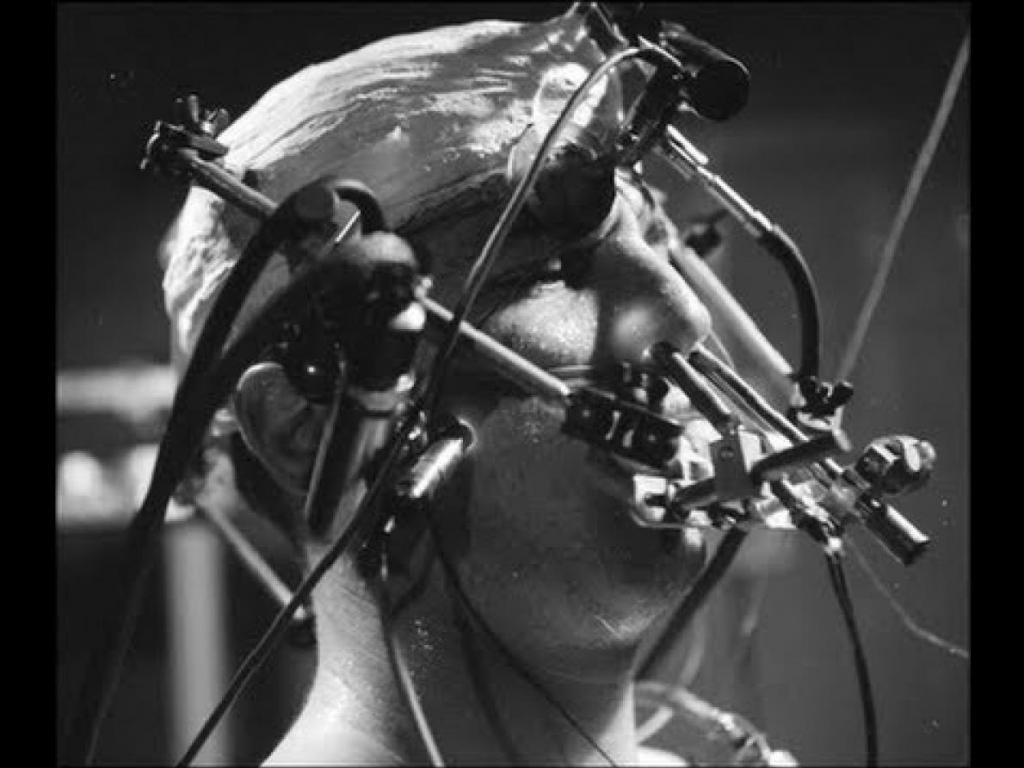
Disturbing human experiments aren’t something the average person thinks too much about. Rather, the progress achieved in the last 150 years of human history is an accomplishment we’re reminded of almost daily. Achievements made in biomedicine and the f ield of psychology mean that we no longer need to worry about things like deadly diseases or masturbation as a form of insanity. For better or worse, we have developed more effective ways to gather information, treat skin abnormalities, and even kill each other. But what we are not constantly reminded of are the human lives that have been damaged or lost in the name of this progress. The following is a list of the 30 most disturbing human experiments in history.
30. The Tearoom Sex Study

Image Source Sociologist Laud Humphreys often wondered about the men who commit impersonal sexual acts with one another in public restrooms. He wondered why “tearoom sex” — fellatio in public restrooms — led to the majority of homosexual arrests in the United States. Humphreys decided to become a “watchqueen” (the person who keeps watch and coughs when a cop or stranger get near) for his Ph.D. dissertation at Washington University. Throughout his research, Humphreys observed hundreds of acts of fellatio and interviewed many of the participants. He found that 54% of his subjects were married, and 38% were very clearly neither bisexual or homosexual. Humphreys’ research shattered a number of stereotypes held by both the public and law enforcement.
29. Prison Inmates as Test Subjects
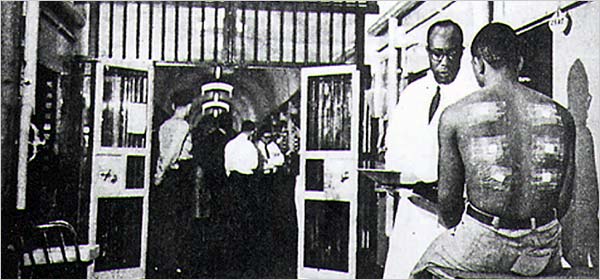
Image Source In 1951, Dr. Albert M. Kligman, a dermatologist at the University of Pennsylvania and future inventor of Retin-A, began experimenting on inmates at Philadelphia’s Holmesburg Prison. As Kligman later told a newspaper reporter, “All I saw before me were acres of skin. It was like a farmer seeing a field for the first time.” Over the next 20 years, inmates willingly allowed Kligman to use their bodies in experiments involving toothpaste, deodorant, shampoo, skin creams, detergents, liquid diets, eye drops, foot powders, and hair dyes. Though the tests required constant biopsies and painful procedures, none of the inmates experienced long-term harm.
28. Henrietta Lacks
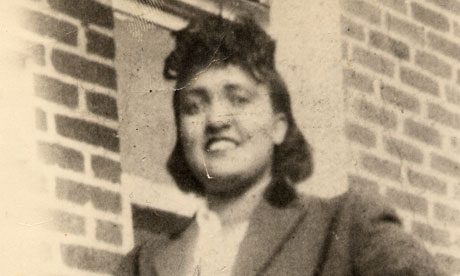
Image Source In 1955, Henrietta Lacks, a poor, uneducated African-American woman from Baltimore, was the unwitting source of cells which where then cultured for the purpose of medical research. Though researchers had tried to grow cells before, Henrietta’s were the first successfully kept alive and cloned. Henrietta’s cells, known as HeLa cells, have been instrumental in the development of the polio vaccine, cancer research, AIDS research, gene mapping, and countless other scientific endeavors. Henrietta died penniless and was buried without a tombstone in a family cemetery. For decades, her husband and five children were left in the dark about their wife and mother’s amazing contribution to modern medicine.
27. Project QKHILLTOP
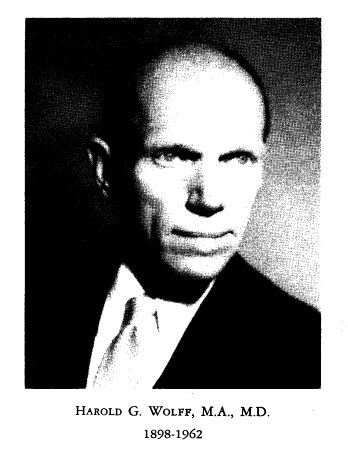
Image Source In 1954, the CIA developed an experiment called Project QKHILLTOP to study Chinese brainwashing techniques, which they then used to develop new methods of interrogation. Leading the research was Dr. Harold Wolff of Cornell University Medical School. After requesting that the CIA provide him with information on imprisonment, deprivation, humiliation, torture, brainwashing, hypnoses, and more, Wolff’s research team began to formulate a plan through which they would develop secret drugs and various brain damaging procedures. According to a letter he wrote, in order to fully test the effects of the harmful research, Wolff expected the CIA to “make available suitable subjects.”
26. Stateville Penitentiary Malaria Study
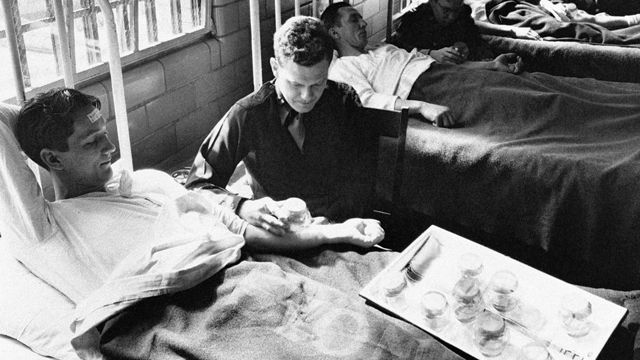
Image Source During World War II, malaria and other tropical diseases were impeding the efforts of American military in the Pacific. In order to get a grip, the Malaria Research Project was established at Stateville Penitentiary in Joliet, Illinois. Doctors from the University of Chicago exposed 441 volunteer inmates to bites from malaria-infected mosquitos. Though one inmate died of a heart attack, researchers insisted his death was unrelated to the study. The widely-praised experiment continued at Stateville for 29 years, and included the first human test of Primaquine, a medication still used in the treatment of malaria and Pneumocystis pneumonia.
25. Emma Eckstein and Sigmund Freud

Image Source Despite seeking the help of Sigmund Freud for vague symptoms like stomach ailments and slight depression, 27-year old Emma Eckstein was “treated” by the German doctor for hysteria and excessive masturbation, a habit then considered dangerous to mental health. Emma’s treatment included a disturbing experimental surgery in which she was anesthetized with only a local anesthetic and cocaine before the inside of her nose was cauterized. Not surprisingly, Emma’s surgery was a disaster. Whether Emma was a legitimate medical patient or a source of more amorous interest for Freud, as a recent movie suggests, Freud continued to treat Emma for three years.
24. Dr. William Beaumont and the Stomach
Image Source In 1822, a fur trader on Mackinac Island in Michigan was accidentally shot in the stomach and treated by Dr. William Beaumont. Despite dire predictions, the fur trader survived — but with a hole (fistula) in his stomach that never healed. Recognizing the unique opportunity to observe the digestive process, Beaumont began conducting experiments. Beaumont would tie food to a string, then insert it through the hole in the trader’s stomach. Every few hours, Beaumont would remove the food to observe how it had been digested. Though gruesome, Beaumont’s experiments led to the worldwide acceptance that digestion was a chemical, not a mechanical, process.
23. Electroshock Therapy on Children

Image Source In the 1960s, Dr. Lauretta Bender of New York’s Creedmoor Hospital began what she believed to be a revolutionary treatment for children with social issues — electroshock therapy. Bender’s methods included interviewing and analyzing a sensitive child in front of a large group, then applying a gentle amount of pressure to the child’s head. Supposedly, any child who moved with the pressure was showing early signs of schizophrenia. Herself the victim of a misunderstood childhood, Bender was said to be unsympathetic to the children in her care. By the time her treatments were shut down, Bender had used electroshock therapy on over 100 children, the youngest of whom was age three.
22. Project Artichoke
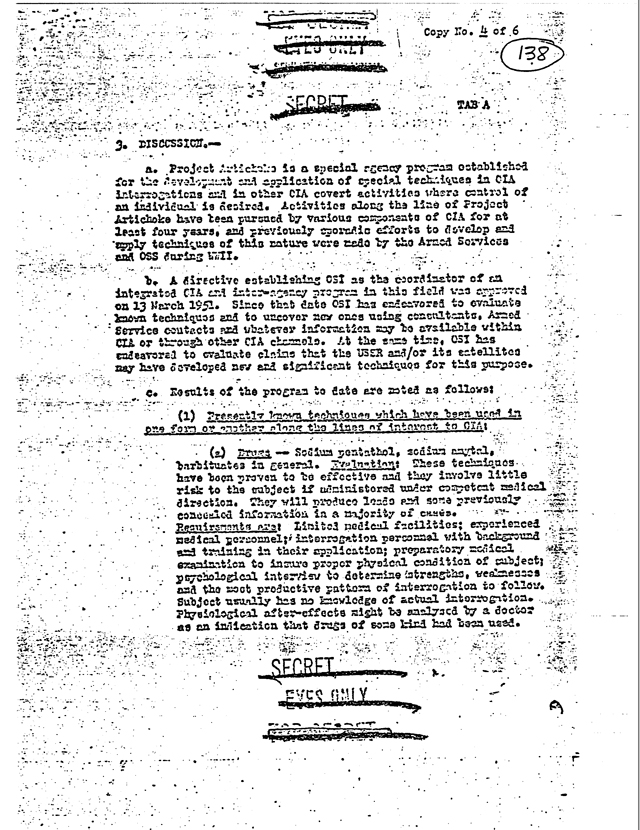
Image Source In the 1950s, the CIA’s Office of Scientific Intelligence ran a series of mind control projects in an attempt to answer the question “Can we get control of an individual to the point where he will do our bidding against his will and even against fundamental laws of nature?” One of these programs, Project Artichoke, studied hypnosis, forced morphine addiction, drug withdrawal, and the use of chemicals to incite amnesia in unwitting human subjects. Though the project was eventually shut down in the mid-1960s, the project opened the door to extensive research on the use of mind-control in field operations.
21. Hepatitis in Mentally Disabled Children

Image Source In the 1950s, Willowbrook State School, a New York state-run institution for mentally handicapped children, began experiencing outbreaks of hepatitis. Due to unsanitary conditions, it was virtually inevitable that these children would contract hepatitis. Dr. Saul Krugman, sent to investigate the outbreak, proposed an experiment that would assist in developing a vaccine. However, the experiment required deliberately infecting children with the disease. Though Krugman’s study was controversial from the start, critics were eventually silenced by the permission letters obtained from each child’s parents. In reality, offering one’s child to the experiment was oftentimes the only way to guarantee admittance into the overcrowded institution.
20. Operation Midnight Climax
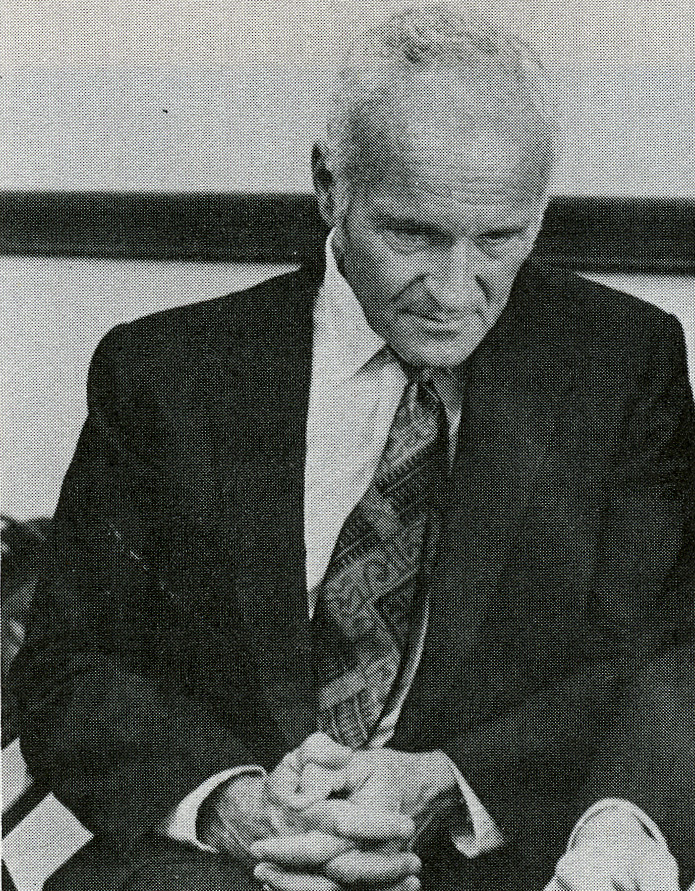
Image Source Initially established in the 1950s as a sub-project of a CIA-sponsored, mind-control research program, Operation Midnight Climax sought to study the effects of LSD on individuals. In San Francisco and New York, unconsenting subjects were lured to safehouses by prostitutes on the CIA payroll, unknowingly given LSD and other mind-altering substances, and monitored from behind one-way glass. Though the safehouses were shut down in 1965, when it was discovered that the CIA was administering LSD to human subjects, Operation Midnight Climax was a theater for extensive research on sexual blackmail, surveillance technology, and the use of mind-altering drugs on field operations.
19. Study of Humans Accidentally Exposed to Fallout Radiation
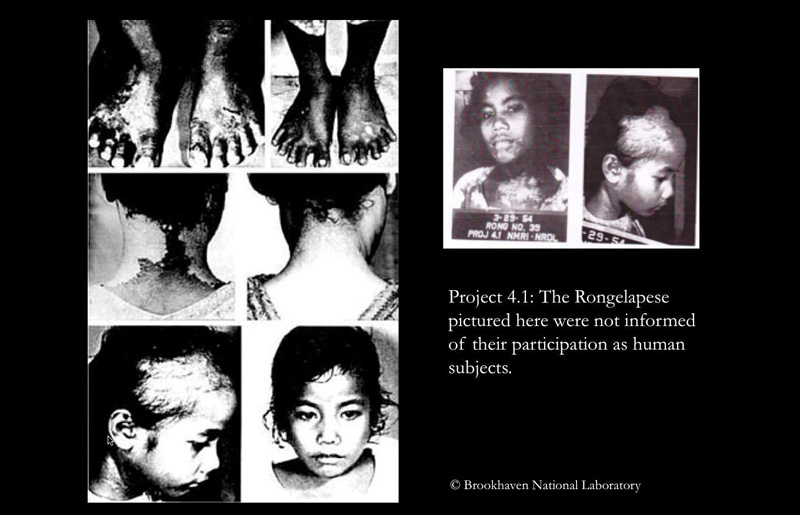
Image Source The 1954 “Study of Response of Human Beings exposed to Significant Beta and Gamma Radiation due to Fall-out from High-Yield Weapons,” known better as Project 4.1, was a medical study conducted by the U.S. of residents of the Marshall Islands. When the Castle Bravo nuclear test resulted in a yield larger than originally expected, the government instituted a top secret study to “evaluate the severity of radiation injury” to those accidentally exposed. Though most sources agree the exposure was unintentional, many Marshallese believed Project 4.1 was planned before the Castle Bravo test. In all, 239 Marshallese were exposed to significant levels of radiation.
18. The Monster Study
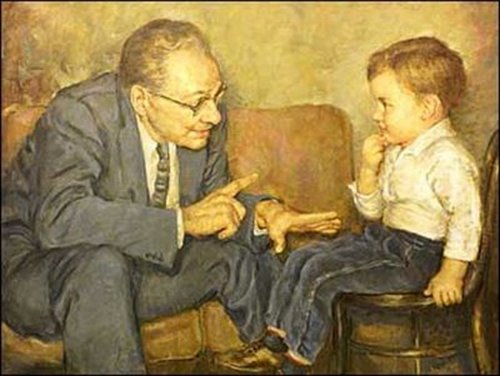
Image Source In 1939, University of Iowa researchers Wendell Johnson and Mary Tudor conducted a stuttering experiment on 22 orphan children in Davenport, Iowa. The children were separated into two groups, the first of which received positive speech therapy where children were praised for speech fluency. In the second group, children received negative speech therapy and were belittled for every speech imperfection. Normal-speaking children in the second group developed speech problems which they then retained for the rest of their lives. Terrified by the news of human experiments conducted by the Nazis, Johnson and Tudor never published the results of their “Monster Study.”
17. Project MKUltra

Image Source Project MKUltra is the code name of a CIA-sponsored research operation that experimented in human behavioral engineering. From 1953 to 1973, the program employed various methodologies to manipulate the mental states of American and Canadian citizens. These unwitting human test subjects were plied with LSD and other mind-altering drugs, hypnosis, sensory deprivation, isolation, verbal and sexual abuse, and various forms of torture. Research occurred at universities, hospitals, prisons, and pharmaceutical companies. Though the project sought to develop “chemical […] materials capable of employment in clandestine operations,” Project MKUltra was ended by a Congress-commissioned investigation into CIA activities within the U.S.
16. Experiments on Newborns
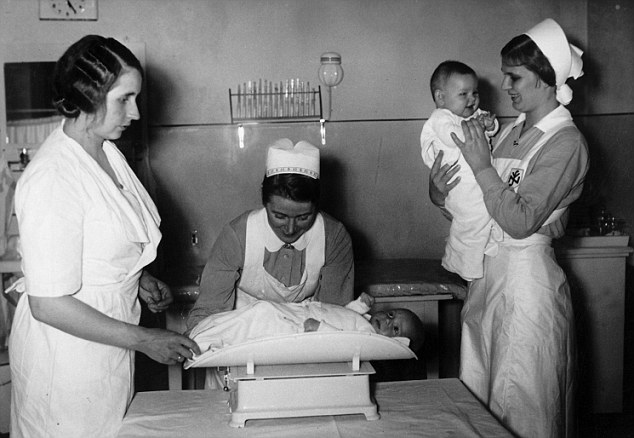
Image Source In the 1960s, researchers at the University of California began an experiment to study changes in blood pressure and blood flow. The researchers used 113 newborns ranging in age from one hour to three days old as test subjects. In one experiment, a catheter was inserted through the umbilical arteries and into the aorta. The newborn’s feet were then immersed in ice water for the purpose of testing aortic pressure. In another experiment, up to 50 newborns were individually strapped onto a circumcision board, then tilted so that their blood rushed to their head and their blood pressure could be monitored.
15. The Aversion Project

Image Source In 1969, during South Africa’s detestable Apartheid era, thousands of homosexuals were handed over to the care of Dr. Aubrey Levin, an army colonel and psychologist convinced he could “cure” homosexuals. At the Voortrekkerhoogte military hospital near Pretoria, Levin used electroconvulsive aversion therapy to “reorientate” his patients. Electrodes were strapped to a patient’s upper arm with wires running to a dial calibrated from 1 to 10. Homosexual men were shown pictures of a naked man and encouraged to fantasize, at which point the patient was subjected to severe shocks. When Levin was warned that he would be named an abuser of human rights, he emigrated to Canada where he currently works at a teaching hospital.
14. Medical Experiments on Prison Inmates
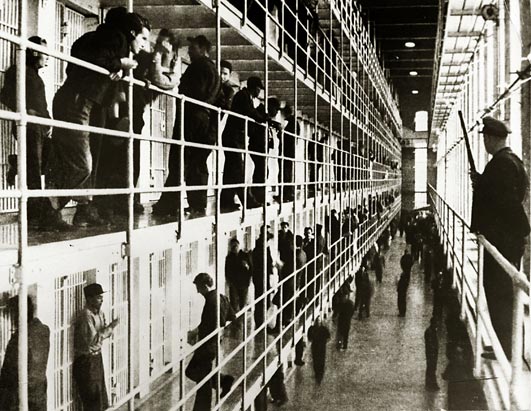
Image Source Perhaps one benefit of being an inmate at California’s San Quentin prison is the easy access to acclaimed Bay Area doctors. But if that’s the case, then a downside is that these doctors also have easy access to inmates. From 1913 to 1951, Dr. Leo Stanley, chief surgeon at San Quentin, used prisoners as test subjects in a variety of bizarre medical experiments. Stanley’s experiments included sterilization and potential treatments for the Spanish Flu. In one particularly disturbing experiment, Stanley performed testicle transplants on living prisoners using testicles from executed prisoners and, in some cases, from goats and boars.
13. Sexual Reassignment

Image Source In 1965, Canadian David Peter Reimer was born biologically male. But at seven months old, his penis was accidentally destroyed during an unconventional circumcision by cauterization. John Money, a psychologist and proponent of the idea that gender is learned, convinced the Reimers that their son would be more likely to achieve a successful, functional sexual maturation as a girl. Though Money continued to report only success over the years, David’s own account insisted that he had never identified as female. He spent his childhood teased, ostracized, and seriously depressed. At age 38, David committed suicide by shooting himself in the head.
12. Effect of Radiation on Testicles

Image Source Between 1963 and 1973, dozens of Washington and Oregon prison inmates were used as test subjects in an experiment designed to test the effects of radiation on testicles. Bribed with cash and the suggestion of parole, 130 inmates willingly agreed to participate in the experiments conducted by the University of Washington on behalf of the U.S. government. In most cases, subjects were zapped with over 400 rads of radiation (the equivalent of 2,400 chest x-rays) in 10 minute intervals. However, it was much later that the inmates learned the experiments were far more dangerous than they had been told. In 2000, the former participants settled a $2.4 million class-action settlement from the University.
11. Stanford Prison Experiment
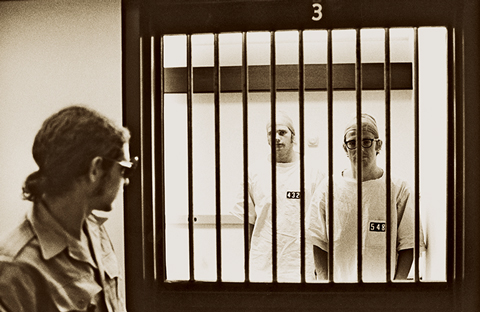
Image Source Conducted at Stanford University from August 14-20, 1971, the Stanford Prison Experiment was an investigation into the causes of conflict between military guards and prisoners. Twenty-four male students were chosen and randomly assigned roles of prisoners and guards. They were then situated in a specially-designed mock prison in the basement of the Stanford psychology building. Those subjects assigned to be guards enforced authoritarian measures and subjected the prisoners to psychological torture. Surprisingly, many of the prisoners accepted the abuses. Though the experiment exceeded the expectations of all of the researchers, it was abruptly ended after only six days.
10. Syphilis Experiments in Guatemala
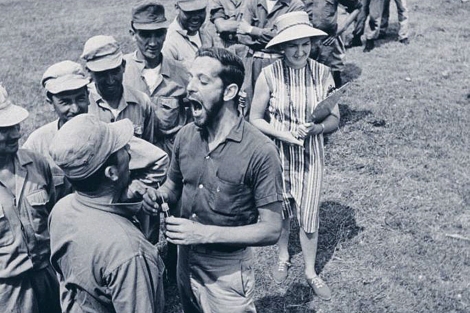
Image Source From 1946 to 1948, the United States government, Guatemalan president Juan José Arévalo, and some Guatemalan health ministries, cooperated in a disturbing human experiment on unwitting Guatemalan citizens. Doctors deliberately infected soldiers, prostitutes, prisoners, and mental patients with syphilis and other sexually transmitted diseases in an attempt to track their untreated natural progression. Treated only with antibiotics, the experiment resulted in at least 30 documented deaths. In 2010, the United States made a formal apology to Guatemala for their involvement in these experiments.
9. Tuskegee Syphilis Study
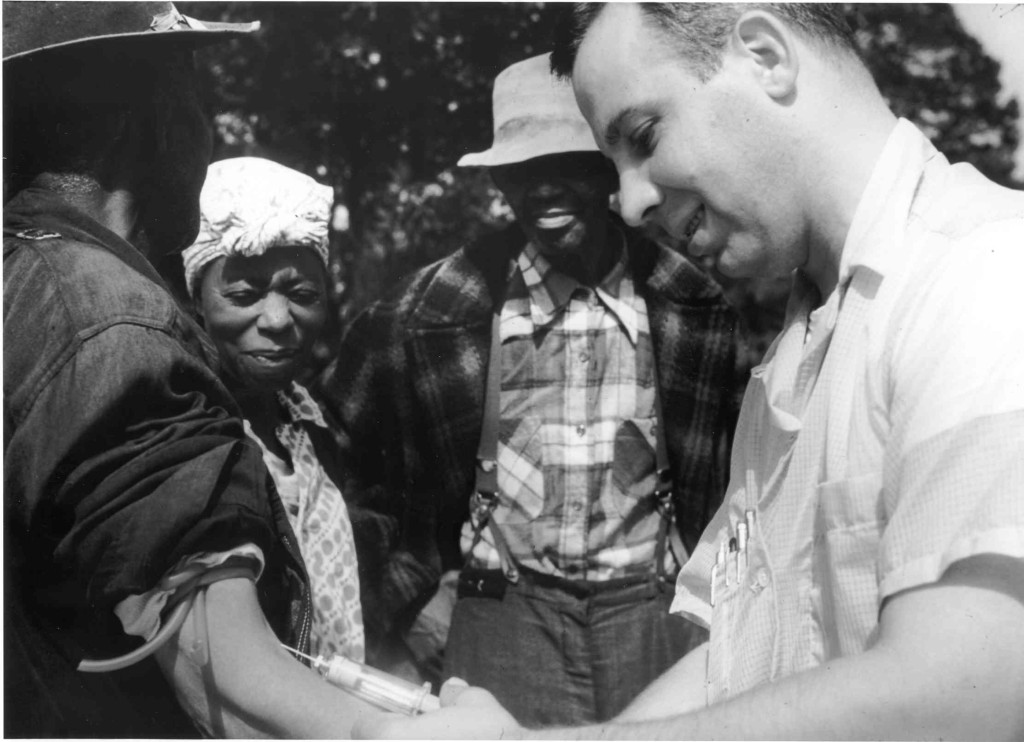
Image Source In 1932, the U.S. Public Health Service began working with the Tuskegee Institute to track the natural progression of untreated syphilis. Six hundred poor, illiterate, male sharecroppers were found and hired in Macon County, Alabama. Of the 600 men, only 399 had previously contracted syphilis, and none were told they had a life threatening disease. Instead, they were told they were receiving free healthcare, meals, and burial insurance in exchange for participating. Even after Penicillin was proven an effective cure for syphilis in 1947, the study continued until 1972. In addition to the original subjects, victims of the study included wives who contracted the disease, and children born with congenital syphilis. In 1997, President Bill Clinton formally apologized to those affected by what is often called the “most infamous biomedical experiment in U.S. history.”

8. Milgram Experiment
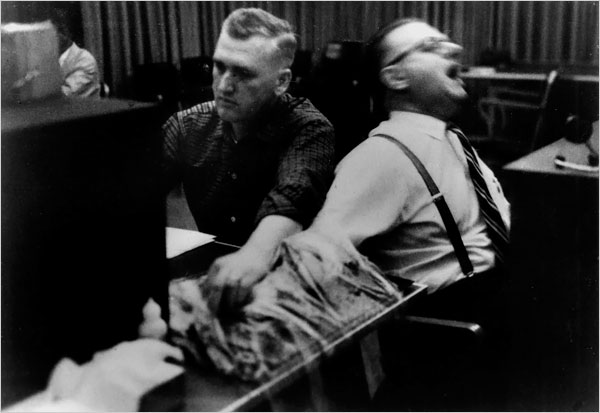
In 1961, Stanley Milgram, a psychologist at Yale University, began a series of social psychology experiments that measured the willingness of test subjects to obey an authority figure. Conducted only three months after the start of the trial of German Nazi war criminal Adolf Eichmann, Milgram’s experiment sought to answer the question, “Could it be that Eichmann and his million accomplices in the Holocaust were just following orders?” In the experiment, two participants (one secretly an actor and one an unwitting test subject) were separated into two rooms where they could hear, but not see, each other. The test subject would then read a series of questions to the actor, punishing each wrong answer with an electric shock. Though many people would indicate their desire to stop the experiment, almost all subjects continued when they were told they would not be held responsible, or that there would not be any permanent damage.
7. Infected Mosquitos in Towns

In 1956 and 1957, the United States Army conducted a number of biological warfare experiments on the cities of Savannah, Georgia and Avon Park, Florida. In one such experiment, millions of infected mosquitos were released into the two cities, in order to see if the insects could spread yellow fever and dengue fever. Not surprisingly, hundreds of researchers contracted illnesses that included fevers, respiratory problems, stillbirths, encephalitis, and typhoid. In order to photograph the results of their experiments, Army researchers pretended to be public health workers. Several people died as a result of the research.
6. Human Experimentation in the Soviet Union

Beginning in 1921 and continuing for most of the 21st century, the Soviet Union employed poison laboratories known as Laboratory 1, Laboratory 12, and Kamera as covert research facilities of the secret police agencies. Prisoners from the Gulags were exposed to a number of deadly poisons, the purpose of which was to find a tasteless, odorless chemical that could not be detected post mortem. Tested poisons included mustard gas, ricin, digitoxin, and curare, among others. Men and women of varying ages and physical conditions were brought to the laboratories and given the poisons as “medication,” or part of a meal or drink.
5. Human Experimentation in North Korea

Image Source Several North Korean defectors have described witnessing disturbing cases of human experimentation. In one alleged experiment, 50 healthy women prisoners were given poisoned cabbage leaves — all 50 women were dead within 20 minutes. Other described experiments include the practice of surgery on prisoners without anesthesia, purposeful starvation, beating prisoners over the head before using the zombie-like victims for target practice, and chambers in which whole families are murdered with suffocation gas. It is said that each month, a black van known as “the crow” collects 40-50 people from a camp and takes them to an known location for experiments.
4. Nazi Human Experimentation
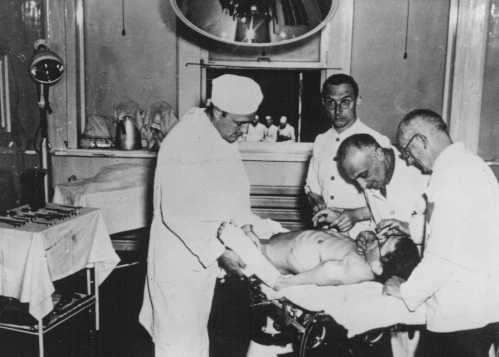
Image Source Over the course of the Third Reich and the Holocaust, Nazi Germany conducted a series of medical experiments on Jews, POWs, Romani, and other persecuted groups. The experiments were conducted in concentration camps, and in most cases resulted in death, disfigurement, or permanent disability. Especially disturbing experiments included attempts to genetically manipulate twins; bone, muscle, and nerve transplantation; exposure to diseases and chemical gasses; sterilization, and anything else the infamous Nazi doctors could think up. After the war, these crimes were tried as part of the Nuremberg Trial and ultimately led to the development of the Nuremberg Code of medical ethics.
3. Unit 731

Image Source From 1937 to 1945, the imperial Japanese Army developed a covert biological and chemical warfare research experiment called Unit 731. Based in the large city of Harbin, Unit 731 was responsible for some of the most atrocious war crimes in history. Chinese and Russian subjects — men, women, children, infants, the elderly, and pregnant women — were subjected to experiments which included the removal of organs from a live body, amputation for the study of blood loss, germ warfare attacks, and weapons testing. Some prisoners even had their stomachs surgically removed and their esophagus reattached to the intestines. Many of the scientists involved in Unit 731 rose to prominent careers in politics, academia, business, and medicine.
2. Radioactive Materials in Pregnant Women
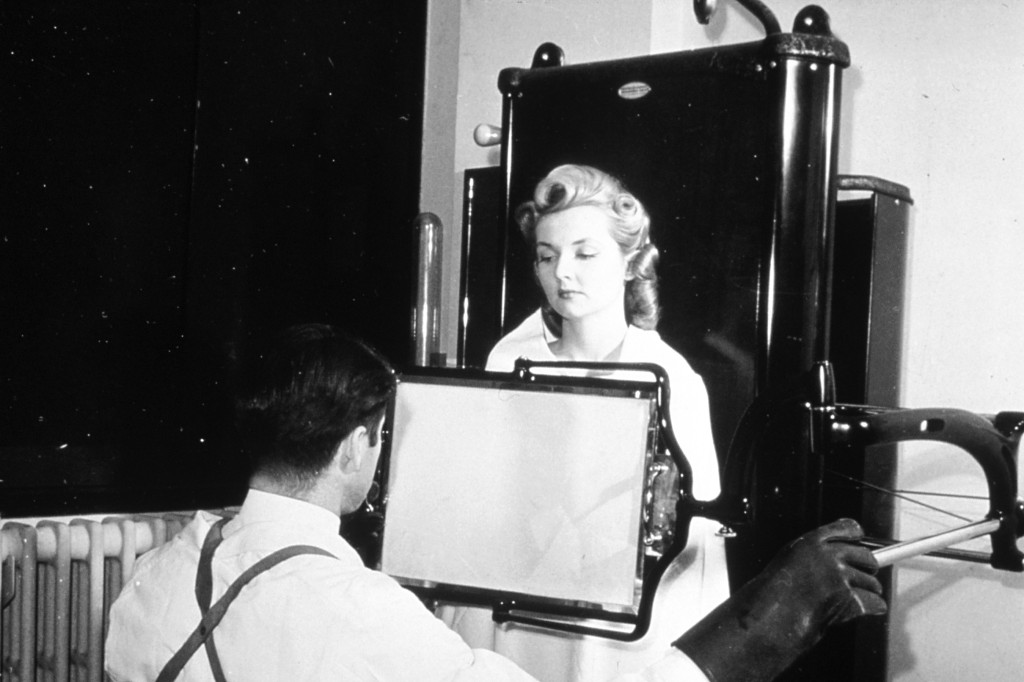
Image Source Shortly after World War II, with the impending Cold War forefront on the minds of Americans, many medical researchers were preoccupied with the idea of radioactivity and chemical warfare. In an experiment at Vanderbilt University, 829 pregnant women were given “vitamin drinks” they were told would improve the health of their unborn babies. Instead, the drinks contained radioactive iron and the researchers were studying how quickly the radioisotope crossed into the placenta. At least seven of the babies later died from cancers and leukemia, and the women themselves experienced rashes, bruises, anemia, loss of hair and tooth, and cancer.
1. Mustard Gas Tested on American Military
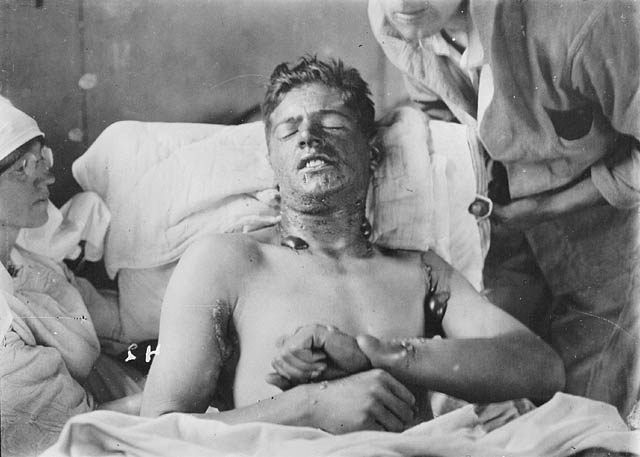
Image Source In 1943, the U.S. Navy exposed its own sailors to mustard gas. Officially, the Navy was testing the effectiveness of new clothing and gas masks against the deadly gas that had proven so terrifying in the first World War. The worst of the experiments occurred at the Naval Research Laboratory in Washington. Seventeen and 18-year old boys were approached after eight weeks of boot camp and asked if they wanted to participate in an experiment that would help shorten the war. Only when the boys reached the Research Laboratory were they told the experiment involved mustard gas. The participants, almost all of whom suffered severe external and internal burns, were ignored by the Navy and, in some cases, threatened with the Espionage Act. In 1991, the reports were finally declassified and taken before Congress.
28. Prison Inmates as Test Subjects Henrietta Lacks 26. Project QKHILLTOP 25. Stateville Penitentiary Malaria Study Stateville Penitentiary Malaria Study: Primaquine 24. Emma Eckstein 23. Dr. William Beaumont Dr. William Beaumont 21. Electroshock Therapy on Children 21. Project Artichoke 20. Operation Midnight Climax 19. Study of Humans Accidentally Exposed to Fallout Radiation 18. The Monster Experiment 17. Project MKUltra 16. Experiments on Newborns 15. The Aversion Project 14. Medical Experiments on Prison Inmates 13. Sexual Reassignment 12. Effect of Radiation on Testicles 11. Stanford Prison Experiment 10. Syphilis Experiment in Guatemala 9. Tuskegee Syphilis Study 8. Milgram Experiment 7. Infected Mosquitos in Towns 6. Human Experimentation in the Soviet Union 5. Human Experimentation in North Korea 4. Nazi Human Experimentation 3. Unit 731 2. Radioactive Materials in Pregnant Women 1. Mustard Gas Tested on American Military
- Psychology Education
- Bachelors in Psychology
- Masters in Psychology
- Doctorate in Psychology
- Psychology Resources
- Psychology License
- Psychology Salary
- Psychology Career
- Psychology Major
- What is Psychology
- Up & Coming Programs
- Top 10 Up and Coming Undergraduate Psychology Programs in the South
- Top 10 Up and Coming Undergraduate Psychology Programs in the Midwest
- Top 10 Up and Coming Undergraduate Psychology Programs in the West
- Top 10 Up and Coming Undergraduate Psychology Programs in the East
- Best Psychology Degrees Scholarship Opportunity
- The Pursuit of Excellence in Psychology Scholarship is Now Closed
- Meet Gemma: Our First Psychology Scholarship Winner
- 50 Most Affordable Clinical Psychology Graduate Programs
- 50 Most Affordable Selective Small Colleges for a Psychology Degree
- The 50 Best Schools for Psychology: Undergraduate Edition
- 30 Great Small Colleges for a Counseling Degree (Bachelor’s)
- Top 10 Best Online Bachelors in Psychology Degree Programs
- Top 10 Online Child Psychology Degree Programs
- 10 Best Online Forensic Psychology Degree Programs
- Top 10 Online Master’s in Psychology Degree Programs
- Top 15 Most Affordable School Psychology Programs
- Top 20 Most Innovative Graduate Psychology Degree Programs
- Top 8 Online Sports Psychology Degree Programs
- Recent Posts
- Does Psychology Require Math? – Requirements for Psychology Majors
- 10 Classes You Will Take as a Psychology Major
- Top 15 Highest-Paying Jobs with a Master’s Degree in Psychology
- The Highest Paying Jobs with an Associate’s Degree in Psychology
- The Highest-Paying Jobs with a Bachelor’s in Psychology
- Should I Major in Psychology?
- How to Become a CBT Therapist
- What is a Social Psychologist?
- How to Become a Clinical Neuropsychologist
- MA vs. MS in Psychology: What’s the Difference?
- PsyD vs. PhD in Psychology: What’s the Difference?
- What Can You Do with a Master’s in Psychology?
- What Can You Do With A PhD in Psychology?
- Master’s in Child Psychology Guide
- Master’s in Counseling Psychology – A Beginner’s Guide
- Master’s in Forensic Psychology – A Beginner’s Guide
- 8 Reasons to Become a Marriage and Family Therapist
- What Do Domestic Violence & Abuse Counselors Do?
- What Training is Needed to Be a Psychologist for People of the LGBTQ Community?
- 15 Inspiring TED Talks on Intelligence and Critical Thinking
- The 30 Most Inspiring Personal Growth and Development Blogs
- 30 Most Prominent Psychologists on Twitter
- New Theory Discredits the Myth that Individuals with Asperger’s Syndrome Lack Empathy
- 10 Crazy Things Famous People Have Believed
- Psychology Infographics
- Top Infographics About Psychology
- The Birth Order Effect [Infographic]
- The Psychology of Dogs [Infographic]
- Can Going Green Improve Your Mental Health? [Infographic]
- Surprising Alternative Treatments for Mental Disorders [Infographic]
- What Can Humans Learn From Animals? [Infographic]
Social Psychology Experiments: 10 Of The Most Famous Studies
Ten of the most influential social psychology experiments explain why we sometimes do dumb or irrational things.

Ten of the most influential social psychology experiments explain why we sometimes do dumb or irrational things.
“I have been primarily interested in how and why ordinary people do unusual things, things that seem alien to their natures. Why do good people sometimes act evil? Why do smart people sometimes do dumb or irrational things?” –Philip Zimbardo
Like famous social psychologist Professor Philip Zimbardo (author of The Lucifer Effect: Understanding How Good People Turn Evil ), I’m also obsessed with why we do dumb or irrational things.
The answer quite often is because of other people — something social psychologists have comprehensively shown.
Each of the 10 brilliant social psychology experiments below tells a unique, insightful story relevant to all our lives, every day.
Click the link in each social psychology experiment to get the full description and explanation of each phenomenon.
1. Social Psychology Experiments: The Halo Effect
The halo effect is a finding from a famous social psychology experiment.
It is the idea that global evaluations about a person (e.g. she is likeable) bleed over into judgements about their specific traits (e.g. she is intelligent).
It is sometimes called the “what is beautiful is good” principle, or the “physical attractiveness stereotype”.
It is called the halo effect because a halo was often used in religious art to show that a person is good.
2. Cognitive Dissonance
Cognitive dissonance is the mental discomfort people feel when trying to hold two conflicting beliefs in their mind.
People resolve this discomfort by changing their thoughts to align with one of conflicting beliefs and rejecting the other.
The study provides a central insight into the stories we tell ourselves about why we think and behave the way we do.
3. Robbers Cave Experiment: How Group Conflicts Develop
The Robbers Cave experiment was a famous social psychology experiment on how prejudice and conflict emerged between two group of boys.
It shows how groups naturally develop their own cultures, status structures and boundaries — and then come into conflict with each other.
For example, each country has its own culture, its government, legal system and it draws boundaries to differentiate itself from neighbouring countries.
One of the reasons the became so famous is that it appeared to show how groups could be reconciled, how peace could flourish.
The key was the focus on superordinate goals, those stretching beyond the boundaries of the group itself.
4. Social Psychology Experiments: The Stanford Prison Experiment
The Stanford prison experiment was run to find out how people would react to being made a prisoner or prison guard.
The psychologist Philip Zimbardo, who led the Stanford prison experiment, thought ordinary, healthy people would come to behave cruelly, like prison guards, if they were put in that situation, even if it was against their personality.
It has since become a classic social psychology experiment, studied by generations of students and recently coming under a lot of criticism.
5. The Milgram Social Psychology Experiment
The Milgram experiment , led by the well-known psychologist Stanley Milgram in the 1960s, aimed to test people’s obedience to authority.
The results of Milgram’s social psychology experiment, sometimes known as the Milgram obedience study, continue to be both thought-provoking and controversial.
The Milgram experiment discovered people are much more obedient than you might imagine.
Fully 63 percent of the participants continued administering what appeared like electric shocks to another person while they screamed in agony, begged to stop and eventually fell silent — just because they were told to.
6. The False Consensus Effect
The false consensus effect is a famous social psychological finding that people tend to assume that others agree with them.
It could apply to opinions, values, beliefs or behaviours, but people assume others think and act in the same way as they do.
It is hard for many people to believe the false consensus effect exists because they quite naturally believe they are good ‘intuitive psychologists’, thinking it is relatively easy to predict other people’s attitudes and behaviours.
In reality, people show a number of predictable biases, such as the false consensus effect, when estimating other people’s behaviour and its causes.
7. Social Psychology Experiments: Social Identity Theory
Social identity theory helps to explain why people’s behaviour in groups is fascinating and sometimes disturbing.
People gain part of their self from the groups they belong to and that is at the heart of social identity theory.
The famous theory explains why as soon as humans are bunched together in groups we start to do odd things: copy other members of our group, favour members of own group over others, look for a leader to worship and fight other groups.
8. Negotiation: 2 Psychological Strategies That Matter Most
Negotiation is one of those activities we often engage in without quite realising it.
Negotiation doesn’t just happen in the boardroom, or when we ask our boss for a raise or down at the market, it happens every time we want to reach an agreement with someone.
In a classic, award-winning series of social psychology experiments, Morgan Deutsch and Robert Krauss investigated two central factors in negotiation: how we communicate with each other and how we use threats.
9. Bystander Effect And The Diffusion Of Responsibility
The bystander effect in social psychology is the surprising finding that the mere presence of other people inhibits our own helping behaviours in an emergency.
The bystander effect social psychology experiments are mentioned in every psychology textbook and often dubbed ‘seminal’.
This famous social psychology experiment on the bystander effect was inspired by the highly publicised murder of Kitty Genovese in 1964.
It found that in some circumstances, the presence of others inhibits people’s helping behaviours — partly because of a phenomenon called diffusion of responsibility.
10. Asch Conformity Experiment: The Power Of Social Pressure
The Asch conformity experiments — some of the most famous every done — were a series of social psychology experiments carried out by noted psychologist Solomon Asch.
The Asch conformity experiment reveals how strongly a person’s opinions are affected by people around them.
In fact, the Asch conformity experiment shows that many of us will deny our own senses just to conform with others.
Author: Dr Jeremy Dean
Psychologist, Jeremy Dean, PhD is the founder and author of PsyBlog. He holds a doctorate in psychology from University College London and two other advanced degrees in psychology. He has been writing about scientific research on PsyBlog since 2004. View all posts by Dr Jeremy Dean

Join the free PsyBlog mailing list. No spam, ever.

- General Categories
- Mental Health
- IQ and Intelligence
- Bipolar Disorder

Unethical Psychological Experiments: Dark Chapters in the History of Science
Throughout history, the pursuit of scientific knowledge has sometimes led researchers down dark paths, where the lines between ethical and unethical practices have been blurred or even completely disregarded. The field of psychology, with its focus on understanding human behavior and cognition, has not been immune to these ethical transgressions. In fact, some of the most notorious and controversial experiments in scientific history have emerged from psychological research.
When we talk about unethical experiments in psychology, we’re referring to studies that violate fundamental ethical principles. These principles include respect for human dignity, informed consent, and the protection of participants from harm. Such experiments often prioritize scientific discovery over the well-being of their subjects, leading to lasting psychological and sometimes physical damage.
The history of ethical guidelines in psychological research is relatively recent. It wasn’t until the mid-20th century that formal ethical codes began to emerge in response to egregious violations of human rights in the name of science. The Nuremberg Code of 1947, established after the horrific Nazi experiments during World War II, was one of the first attempts to codify ethical standards for human research. However, it took several more decades and numerous controversial studies for the field of psychology to fully embrace comprehensive ethical guidelines.
Understanding past unethical practices in psychology is crucial for several reasons. First, it serves as a stark reminder of the potential for harm when scientific curiosity is unchecked by moral considerations. Second, it helps us appreciate the importance of current ethical standards and the need for continued vigilance. Finally, examining these dark chapters in scientific history can provide valuable insights into human nature and the complex dynamics of power and obedience.
The Stanford Prison Experiment: A Descent into Darkness
One of the most infamous psychological experiments of all time is the Stanford Prison Experiment, conducted by Philip Zimbardo in 1971. The study aimed to investigate the psychological effects of perceived power in a simulated prison environment. Zimbardo recruited 24 male college students and randomly assigned them roles as either prisoners or guards in a mock prison set up in the basement of Stanford University.
The experiment was initially planned to last two weeks but was terminated after just six days due to the alarming behavior that emerged. The “guards” quickly began to abuse their power, subjecting the “prisoners” to increasingly cruel and degrading treatment. Meanwhile, the “prisoners” showed signs of severe emotional distress, with some even experiencing nervous breakdowns.
The ethical concerns raised by the Stanford Prison Experiment are numerous and profound. Participants were not fully informed about the nature of the study or the potential psychological risks involved. The lack of proper oversight allowed the situation to spiral out of control, with Zimbardo himself becoming too deeply involved as the “prison superintendent.” Perhaps most disturbingly, the experiment continued even after it became clear that participants were suffering significant psychological harm.
The long-term impact of the Stanford Prison Experiment on its participants has been a subject of ongoing debate. Some reported lasting trauma and nightmares, while others claimed the experience was ultimately positive, leading to personal growth and self-reflection. Regardless of individual outcomes, the study has had a profound influence on psychological research and our understanding of situational influences on human behavior.
The Milgram Obedience Experiment: Testing the Limits of Authority
Another landmark study that pushed ethical boundaries was the Milgram Obedience Experiment , conducted by Stanley Milgram in the early 1960s. Inspired by the Holocaust and the defense of Nazi war criminals that they were “just following orders,” Milgram sought to investigate the extent to which ordinary people would obey authority figures, even when asked to perform morally questionable acts.
The experimental design was deceptively simple yet deeply unsettling. Participants were told they were taking part in a study on learning and memory. They were instructed to administer electric shocks to a “learner” (actually an actor) whenever the learner gave incorrect answers to a series of questions. The voltage of the shocks increased with each wrong answer, eventually reaching levels marked as dangerous and even potentially fatal.
The results were shocking, both figuratively and literally. A staggering 65% of participants continued to administer shocks up to the maximum voltage, despite hearing the learner’s increasingly distressed cries and pleas to stop. Milgram’s findings suggested that ordinary people could be compelled to act against their moral judgments when pressured by authority figures.
The ethical issues raised by Milgram’s study were numerous. Participants were deceived about the true nature of the experiment and subjected to severe psychological stress. Many experienced intense anxiety and guilt, believing they had seriously harmed or even killed another person. The study also raised questions about the long-term psychological effects on participants who discovered they were capable of such obedience to authority.
Despite these ethical concerns, the Milgram Obedience Experiment has had a profound influence on our understanding of authority, obedience, and moral decision-making. It has been widely cited in discussions of historical atrocities and continues to inform debates about personal responsibility in hierarchical systems.
The Little Albert Experiment: Fear and Ethics in Infant Research
Moving back in time to the early days of behaviorism, we encounter the Little Albert Experiment , conducted by John B. Watson and Rosalie Rayner in 1920. This controversial study aimed to demonstrate that emotional reactions could be classically conditioned in humans, using a 9-month-old infant known as “Little Albert” as the subject.
Watson and Rayner began by presenting Little Albert with various stimuli, including a white rat, a rabbit, a monkey, masks, and burning newspapers. Initially, Albert showed no fear of these objects. The researchers then paired the presentation of the rat with a loud, frightening noise. After several such pairings, Albert began to cry and show fear when the rat was presented alone. This fear response then generalized to other similar objects, such as a rabbit and a dog.
The ethical violations in this study are glaring by modern standards. Experimenting on an infant who could not provide consent, deliberately causing fear and distress, and potentially creating long-lasting phobias are all clear breaches of ethical research practices. Moreover, there was no attempt to decondition Little Albert’s fear response at the end of the study.
The long-term consequences for Little Albert have been a subject of much speculation and investigation. Some researchers have attempted to identify the real identity of Little Albert and trace his life after the experiment. While these efforts have yielded conflicting results, they highlight the enduring ethical debates surrounding this infamous study.
The Monster Study: When Research Becomes Monstrous
Perhaps one of the most egregious examples of unethical psychological research is The Monster Study , conducted by Dr. Wendell Johnson and his team at the University of Iowa in 1939. This experiment, which remained hidden from public knowledge for decades, aimed to investigate the effect of negative speech therapy on children’s fluency.
The study involved 22 orphaned children, half of whom were placed in a control group and received positive speech therapy. The other half, however, were subjected to constant criticism of their speech, being told they were beginning to stutter even when they spoke normally. The researchers hypothesized that this negative reinforcement would lead to the development of stuttering in children who previously had no speech problems.
The ethical breaches in this study are numerous and severe. Experimenting on vulnerable orphaned children, deliberately attempting to induce a speech disorder, and potentially causing lasting psychological harm are all clear violations of ethical research standards. The fact that the study was kept secret for so long only adds to its troubling nature.
The lasting effects on the participants were profound. Many of the children in the negative reinforcement group developed lasting speech problems and suffered from low self-esteem and other psychological issues well into adulthood. When the study finally came to light in 2001, it sparked public outrage and led to a lawsuit against the state of Iowa, which was eventually settled for $925,000.
Modern Ethical Guidelines in Psychological Research
The dark history of unethical psychological experiments has played a crucial role in the development of modern ethical standards in research. Organizations like the American Psychological Association (APA) have established comprehensive ethical guidelines that all researchers must follow. These guidelines are regularly updated to address new ethical challenges that arise with advances in research methods and technology.
Key principles of ethical psychological research now include:
1. Informed consent: Participants must be fully informed about the nature of the study and any potential risks before agreeing to participate.
2. Minimization of harm: Researchers must take all possible steps to protect participants from physical or psychological harm.
3. Right to withdraw: Participants must be informed that they can leave the study at any time without penalty.
4. Confidentiality: Researchers must protect the privacy and personal information of participants.
5. Debriefing: After the study, participants must be fully informed about the true nature of the research and any deception used.
One of the most important safeguards against unethical research practices is the Institutional Review Board (IRB) . These committees, composed of experts in various fields, review research proposals to ensure they meet ethical standards before allowing them to proceed. IRBs play a crucial role in preventing unethical studies and protecting the rights and well-being of research participants.
The Belmont Report , published in 1979, has been particularly influential in shaping ethical guidelines for human research. It outlines three fundamental principles: respect for persons, beneficence, and justice. These principles continue to guide ethical decision-making in psychological research today.
As we reflect on the dark chapters of psychological research history, several important lessons emerge. First and foremost, we are reminded of the paramount importance of ethical considerations in scientific inquiry. The pursuit of knowledge, no matter how potentially valuable, can never justify the violation of human rights or the infliction of lasting harm on research participants.
Secondly, these unethical experiments highlight the power dynamics inherent in research settings and the potential for abuse when proper safeguards are not in place. The banality of evil , a concept often associated with these studies, reminds us that ordinary people can commit harmful acts when placed in positions of authority or when following orders.
Finally, these studies underscore the complexity of human behavior and the sometimes unexpected outcomes of psychological manipulation. While the methods used in these experiments were deeply unethical, the insights gained have contributed to our understanding of human psychology and have informed practices in fields ranging from education to law enforcement.
In contemporary research, balancing scientific progress with participant well-being and rights remains an ongoing challenge. As new technologies emerge, such as brain imaging and genetic testing, novel ethical dilemmas arise. Researchers must continually reassess and update ethical guidelines to address these new challenges.
It’s worth noting that not all controversial psychological studies are necessarily unethical. Some studies that push ethical boundaries may be justified if they have significant potential benefits and incorporate robust safeguards to protect participants. The key is to carefully weigh the potential risks against the expected benefits and to always prioritize the well-being of research participants.
In conclusion, the history of unethical psychological experiments serves as a sobering reminder of the potential for harm when scientific curiosity is unchecked by moral considerations. It underscores the critical importance of ethical guidelines and oversight in research. As we continue to push the boundaries of psychological knowledge, we must remain vigilant in our commitment to ethical practices, ensuring that the pursuit of scientific understanding never comes at the cost of human dignity and well-being.
By learning from these dark chapters in our scientific history, we can strive to conduct research that not only advances our understanding of the human mind but also respects and protects the individuals who make that research possible. After all, true scientific progress is not just about what we discover, but how we discover it.
References:
1. Zimbardo, P. G. (1973). On the ethics of intervention in human psychological research: With special reference to the Stanford Prison Experiment. Cognition, 2(2), 243-256.
2. Milgram, S. (1963). Behavioral study of obedience. The Journal of Abnormal and Social Psychology, 67(4), 371-378.
3. Watson, J. B., & Rayner, R. (1920). Conditioned emotional reactions. Journal of Experimental Psychology, 3(1), 1-14.
4. Ambrose, N. G., & Yairi, E. (2002). The Tudor study: Data and ethics. American Journal of Speech-Language Pathology, 11(2), 190-203.
5. American Psychological Association. (2017). Ethical principles of psychologists and code of conduct. https://www.apa.org/ethics/code
6. National Commission for the Protection of Human Subjects of Biomedical and Behavioral Research. (1979). The Belmont Report: Ethical principles and guidelines for the protection of human subjects of research. https://www.hhs.gov/ohrp/regulations-and-policy/belmont-report/index.html
Was this article helpful?
Would you like to add any comments (optional), leave a reply cancel reply.
Your email address will not be published. Required fields are marked *
Save my name, email, and website in this browser for the next time I comment.
Post Comment
Related Resources

Psychological Effects of Bullying: Long-Term Impact on Mental Health and…

Psychology of Possessive Friends: Unraveling Clingy Behavior in Relationships

Bully Psychology: Unraveling the Mindset Behind Aggressive Behavior

Adrenaline in Psychology: Understanding the ‘Fight or Flight’ Hormone

Psychological Burnout Symptoms: Recognizing the Signs and Seeking Help

Dental Psychology: The Mind-Mouth Connection in Oral Health

Psychological Effects of Terminal Illness: Navigating Emotional Challenges

Saying Sorry Too Much: The Psychology Behind Excessive Apologizing

Psychology of Being Judgmental: Understanding and Overcoming Harsh Evaluations

Imposter Syndrome in Psychology: Unraveling the Phenomenon of Self-Doubt
Search form
How to Live Better, Longer

Reverse The Clock: This Simple Exercise Thrice A Week Can Make You 8 Years Younger

Study Finds Two Common Gynecological Disorders Linked To Increased Risk Of Early Death

Texas Woman Who Briefly Died After Rare Delivery Room Complication Has No Memory of Giving Birth to Triplets

Every Extra Hour Of Walking In Your 40's Adds Time To Lifespan: Study Suggests

Postpartum Depression Rates Doubled In A Decade, Prevalence 'High And Rising' In U.S.: Study

Stress During Pregnancy Linked To Higher Risk Of Epilepsy In Children

Just 80 Minutes Of Weekly Exercise Reduces Baby Blues, Postpartum Depression Symptoms: Says Study

Study Suggests A Medication-Free Treatment For Depression, Finds Symptom Relief In 40% Cases

AI Detects Woman's Cancer After Doctors Tell Her She's Healthy, Likely Saves Her Life: 'This May Have Been My Last Mammogram'

Explore The Healing Power Of Expressive Arts With Wellness Coach Karen Corona

Dr. Jason Shumard Revolutionizes Holistic Healing And Transformative Wellness

Thermal Earring To Monitor Temperature: Experts Say It Could Also Track Ovulation And Stress

Healthy Holiday Cheer: Thoughtful Christmas Gifts For A Vibrant 2024

Is Paracetamol Safe? Regular Use In Older Adults May Lead To Ulcers, Heart, And Kidney Complications

Crossed 35? You Need To Watch Your Weight To Reduce Breast Cancer Risk

Texas Doctor Forced to Delete TikTok Helping Undocumented Immigrants Get Healthcare After Governor Threatens to Defund Children's Hospital

SKNV is the First Pharmacy for Sensitive Skin

No Time to Exercise? How to Lose Weight and Get in the Best Shape You've Ever Been

How Red Borneo Kratom Boosts Your Productivity

Nolah Mattress Review: Is It a Good Buy?
Mad scientists: 10 most unethical social experiments gone horribly wrong.

- Share on Twitter
- Share on Facebook
- Share on Pocket
Curiosity is the fuel that drives social experiments performed in the world of science. Today, experiments must abide by the American Psychological Association’s (APA) Code of Conduct , which pertains to everything from confidentiality, to consent, to overall beneficence. However, the standards weren’t always so high. In their latest video , “10 Evil Social Experiments,” Alltime10s highlights the most famous and disturbing experiments that took place all around the world that could never happen today.
Adults, children, and even animals were a part of the inhumane practices of several mad scientists. In 1939, psychologist Wendell Johnson at the University of Iowa performed "The Monster Study," a stuttering experiment on 22 orphaned children. The children were divided into two groups. The first received positive speech therapy , in which the children's successes were praised. The other group had negative therapy and were told off for every mistake they made.
The effects on the children who had negative speech therapy were horrible. Their schoolwork suffered, their behavior became more timid, and they developed speech impediments. In 2007, six of the children were awarded $925,000 for life-long psychological damage.
In the 1970s to 1980s, during the Apartheid era, the South African army forced suspected gay and lesbian soldiers to undergo sex-change operations , chemical castrations, electrical shocks, and other forms of unethical medication, in an attempt to cure their illegal sexuality, which became known as “The Aversion Project.”
Inevitably, this became psychologically damaging to about 900 individuals who underwent reassignment operations carried out in military hospitals in South Africa throughout this period. The patients were abandoned, and often unable to pay for the hormones needed to maintain their new identity, leading some to commit suicide.
Animals could not escape the wrath of mad scientist Dr. Harry Harlow in his experiment “The Pit of Despair.” Harlow experimented on baby rhesus monkeys to study social interaction and isolation in the 1970s. He would select baby monkeys who had bonded with their mother and separate them, placing the infants in little steel chambers with no contact with anything else. He kept them in there for up to a year, causing irreparable psychosis in many of the monkeys.
The monkeys were later returned to a group, but were bullied; others starved themselves to death. When the test subjects later became mothers, they would chew off the fingers of their offspring or crush their heads. Not only were Harlow’s experiments extreme, they revealed nothing new about social interactions.
Luckily, the APA's Code of Conduct brought ethics in psychological experiments. Review boards enforce these ethics to prevent experiments like the ones listed above from occurring.
View the rest of Alltime10s video to see the most disturbing social experiment in the 20th century.

- Alzheimer's
- Amputation/Prosthetics

- Dengue Fever
- Dental Health
- Dermatological Disorders
- Developmental Disorders
- Digestive Disorders
- Down Syndrome

- Gastrointestinal Disorders
- Genetic Disorders
- Genital Warts
- Geriatric care
- Gerontology
- Gum Disease
- Gynecological Disorders
- Head And Neck Cancer

- Kidney Cancer
- Kidney Disease
- Knee Problems
- Lead Poisoning
- Liver Disease
- Low Testosterone
- Lung Cancer

- Macular Degeneration
- Men's Health
- Menstruation/Periods
- Mental Health
- Metabolic Disorders

- Pancreatic Cancer
- Parasitic Infections
- Parkinson's Disease
- Pediatric Diseases

- Schizophrenia
- Senior Health
- Sexual Health
- Sickle Cell Disease
- Skin Cancer
- Sleep Apnea

- Uterine Cancer
- Varicose Veins
- Viral Infection
- Women's Health
- Yeast Infection

IMAGES
COMMENTS
Those involved in psychology likely already know the name John Watson. Watson is known as the "Father of Behaviorism" and often used orphans in his various experiments. In one well known and especially unethical experiment, Watson used a nine-month old orphan known as Little Albert. At first, Little Albert was exposed to a variety of sights ...
The vast majority of us would say that we absolutely would never do such a thing, but one controversial psychology experiment challenged this basic assumption. Social psychologist Stanley Milgram conducted a series of experiments to explore the nature of obedience. Milgram's premise was that people would often go to great, sometimes dangerous ...
At its core, an unethical psychology experiment is one that violates the fundamental rights and well-being of its participants. These studies often involve deception, coercion, or potential harm - physical, psychological, or both. ... Stanley Milgram's Obedience Experiments: Redefining Social Psychology shed light on the dark corners of ...
The Top 10 Unethical Psychology Experiments. 10. The Stanford Prison Experiment (1971). This example of unethical research studies occurred in August of 1971, Dr. Philip Zimbardo of Stanford University began a Navy-funded experiment examining the effects of power dynamics between prison officers and prisoners.
Here's a list of the 30 most famous unethical psychology experiments in human history. ... In 1961, Stanley Milgram, a psychologist at Yale University, began a series of social psychology experiments that measured the willingness of test subjects to obey an authority figure. Conducted only three months after the start of the trial of German ...
5. The Milgram Social Psychology Experiment. The Milgram experiment, led by the well-known psychologist Stanley Milgram in the 1960s, aimed to test people's obedience to authority.. The results of Milgram's social psychology experiment, sometimes known as the Milgram obedience study, continue to be both thought-provoking and controversial.
Explore infamous unethical psychological experiments, their impact on participants, and how they shaped modern research ethics in this comprehensive overview. ... Behavioral study of obedience. The Journal of Abnormal and Social Psychology, 67(4), 371-378. 3. Watson, J. B., & Rayner, R. (1920). Conditioned emotional reactions. Journal of ...
The Facebook Experiment of 2012 created quite an uproar amongst indignant users. Nearly 700,000 Facebook users were subjected to secret psychological tests to gauge the effects of different types ...
Though these are highly unethical experiments, it should be mentioned that they did pave the way to induct our current ethical standards of experiments, and that should be seen as a positive. There is some crossover on this list with the Top 10 Evil Human Experiments. Three items from that list are reproduced here (items 8, 9, and 10) for the ...
Luckily, the APA's Code of Conduct brought ethics in psychological experiments. Review boards enforce these ethics to prevent experiments like the ones listed above from occurring. View the rest of Alltime10s video to see the most disturbing social experiment in the 20th century.